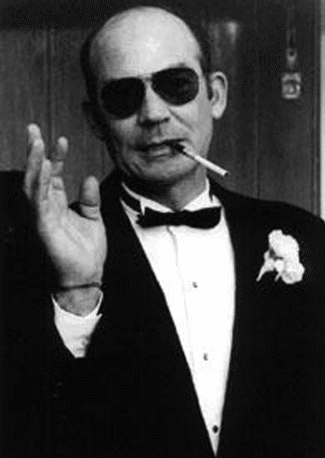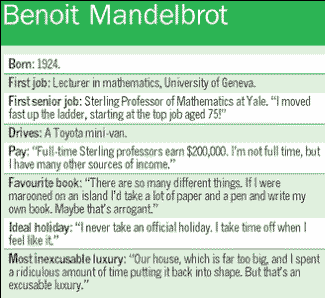http://www.sptimes.com/2005/08/01/news_pf/Worldandnation/Marijuana_medicine_te.shtmlMarijuana medicine tests pot's potential Canada's approval of a cannabis-based medicine has people wondering what would be possible if a stigma could be removed.
By SUSAN TAYLOR MARTIN,
Times Senior Correspondent Published
August 1, 2005
BURLINGTON, Ontario - Since she was diagnosed with multiple sclerosis 13 years ago, Alison Myrden has suffered from pain so intense it feels like ”lightning going off in my face.“
To reduce her agony, Myrden, 41, has long taken dozens of prescription pills a day, including the powerful Dilaudin. Now, though, she has a new weapon in her arsenal: Sativex, billed as the world's first cannabis-based drug.
”I think it has good potential,“ says Myrden, squirting Sativex into her mouth from a small sprayer. ”It's really fabulous that the government has taken marijuana seriously and is making a medicine of it.“
This spring, Canada became the first country to approve Sativex, a prescription drug for MS that contains tetrahydrocannabinol, or THC, and other active ingredients of the Cannabis sativa plant. The drug went on sale throughout Canada in mid June, just a week after the medical marijuana movement in the United States was dealt a major setback by the U.S. Supreme Court.
Sativex is so new and expensive that few Canadians are using it so far. But given the timing of its debut, it has highlighted the divergent views on marijuana's therapeutic benefits.
Sativex ”is an important step, but why should this whole field be centered in Canada and England instead of the United States? It's because of the repression of science in the United States,“ says Rick Doblin, whose Sarasota-based Multidisciplinary Association for Psychedelic Studies funds research of marijuana's medical effects.
But the U.S. government's Office of National Drug Control Policy, which deems marijuana a dangerous drug, says many of those touting its therapeutic use want to legalize its recreational use as well.
”Of course we would look at any medicine proven safe or efficacious,“ says spokesman Tom Riley. ”But the medical marijuana issue has been kind of larded with hype for a number of years by a lot of people with agendas in this area.“
Sativex was developed by GW Pharmaceuticals, a small British company that is trying to distance itself from the medical marijuana debate as it seeks U.S. and European approval of a potentially lucrative product.
”There is a clear distinction to be drawn between what you would call medical marijuana and Sativex, which is the name of a medicine,“ says Mark Rogerson, a GW spokesman. ”Medical marijuana is smoking a joint or baking a cake. This is a prescription medicine for MS.“
Multiple sclerosis is a chronic disease of the central nervous system (brain, spinal cord and optic nerves) that affects people in unpredictable ways. Some patients suffer from spasticity, causing the muscles to lock up; others, like Myrden, shake or have excruciating pain.
In Britain, GW has focused on Sativex as a treatment for spasticity. So far the British government has refused to approve it without more evidence it works for that purpose.
In Canada, however, Sativex has been approved for use in treating neuropathic pain, another common symptom.
Myrden, a disabled former corrections officer and one of 50,000 Canadians with MS, says Sativex helps relieve pain but is not as cheap or effective as the plant.
Unlike the other drugs she takes, Sativex is not covered by Ontario's health care program. A small bottle, with enough sprays to last Myrden just 31/2 days, costs $125.
For Sativex to gain wider use, ”it has to be cost effective,“ says Myrden, who lives on government disability and help from her mother and boyfriend. ”It's about $1,000 a month - where am I going to get money for my next prescription?“
By comparison, it costs Myrden about $400 a month to buy marijuana from compassion clubs, the quasilegal establishments that sell it for medicinal purposes. She is also among a few hundred Canadians licensed by the government to grow marijuana and smoke it wherever tobacco cigarettes are allowed.
Despite its high price, Sativex is less effective than regular marijuana, Myrden has found. She never used marijuana before developing MS, she says, but now smokes it several times a day and eats it in oatmeal cookies.
With the right strain of marijuana, ”I can get rid of the pain in minutes for two hours. I would rely on marijuana hands down - it's the only thing that gives me quality of life.“
The Multiple Sclerosis Society of Canada considers Sativex ”just another“ treatment for MS-related symptoms.
That it comes in spray form and is obtainable only by prescription ”is a little more reassuring because it's less apt to be abused,“ says Dr. William McIlroy, the society's medical adviser. ”The majority of doctors in Canada don't want to be known as the primary source of smoked marijuana.“
In the United States, where MS afflicts 400,000, the National Multiple Sclerosis Society says anecdotal evidence suggests marijuana can help reduce MS-related pain. But it remains difficult to measure relief objectively: Participants in one study realized they were getting a cannabinoid-based treatment instead of a placebo when they developed the dry mouth and lightheadedness familiar to marijuana users.
”So far the studies that have purported to show the benefits of marijuana have not been well-blinded, and so people knew what they were receiving,“ says John Richert, the society's vice president for research. ”That makes it impossible to distinguish whether one is seeing a true effect of the treatment or whether it is a placebo effect.“
As for Sativex, ”there is still no good scientific study that proves its efficacy,“ Richert says.
GW Pharmaceuticals has yet to formally seek approval for Sativex in the United States, though it has ”started the process“ of talking to the Food and Drug Administration, says Rogerson, the GW spokesman. ”No disrespect to the FDA, but we would expect it be a longer process in the States.“
Advocates of medical marijuana claim the U.S. government has made it difficult to do scientific research into the plant's therapeutic effects. Researchers must get federal approval for their studies and must use marijuana from a government farm in Mississippi.
”This is the only drug in America for which the only source for research purposes is the U.S. government, and they have a reputation for producing not very good quality stuff,“ says Ethan Nadelmann, executive director of the Drug Policy Alliance, which advocates more liberal drug policies.
Availability of the Mississippi marijuana used to be limited to those studying the plant's effects on behavior and reasoning. But the government began giving it to other researchers after a federal advisory panel found enough evidence of marijuana's medical benefits to warrant additional study.
”Except for the harm associated with smoking, the adverse effects of marijuana are within the range of effects tolerated for other medicines,“ said a report by the Institute of Medicine.
Thousands of people with MS, cancer, AIDS and other diseases routinely use marijuana in California and the 10 other states with medical marijuana laws. (Florida is not among them.) In June, however, the Supreme Court ruled that the federal government still can ban marijuana possession in states that have eliminated penalties for its therapeutic use.
That's unfortunate, says Myrden, who applauds the Canadian government for approving Sativex and allowing sick people to use marijuana in other forms as well.
”I'm really excited this is available,“ she says of Sativex, ”but you have to realize the natural form is just as good if not better."
--Susan Taylor Martin can be contacted at
[email protected] © Copyright 2003 St. Petersburg Times. All rights reserved



